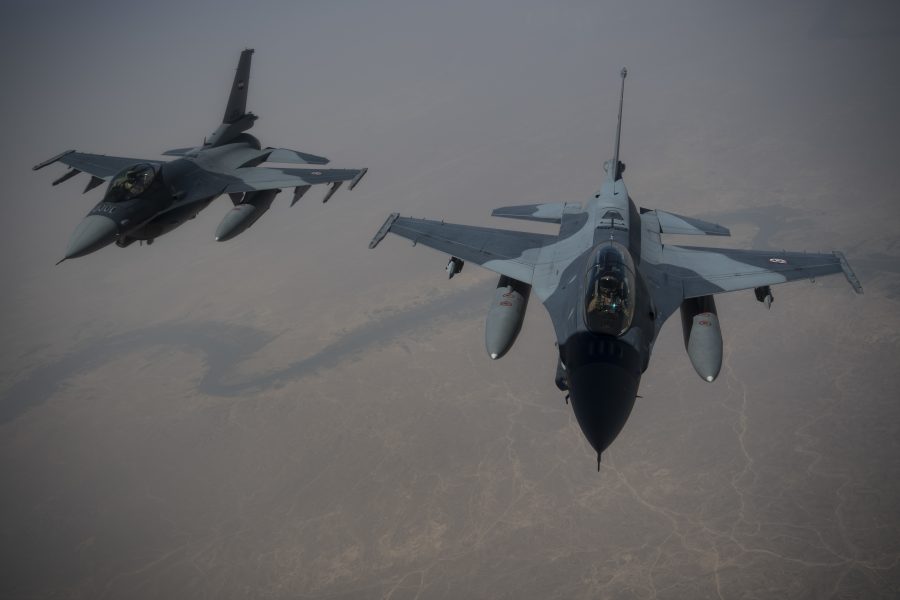The U.S. and its allies continue to strike the Islamic State group and other terrorist targets to prevent a comeback of the groups, even as much of the Pentagon’s public attention has shifted towards the southern border.
On Jan. 31, Iraqi Security Forces (ISF) conducted “precision airstrikes” near Kirkuk, Iraq, killing five ISIS operatives, U.S. Central Command announced Feb. 4. The strike was conducted by Iraqi F-16s, the Iraqi Air Force’s only modern multirole fighter aircraft, Iraq’s government said.
The strikes were “enabled” by CENTCOM, the U.S. military said. U.S. aircraft have often assisted Iraq’s Air Force by using American aircraft to laser-guide Iraqi bombs on their targets. Though CENTCOM did not specify the exact type of support the U.S. furnished, it said coalition forces provided “technical support and intelligence” to the Iraqis.
“An initial post-strike clearance found multiple explosive suicide belts and other materials,” CENTCOM said in a statement. “ISIS remains a threat to the region and beyond, and CENTCOM, along with partners and allies, will continue to aggressively pursue these terrorists to protect the homeland.”
Indeed, a day later, on Feb. 1, in the first U.S. military action ordered by President Donald Trump during his second term, U.S. Navy F/A-18 Super Hornets, supported by U.S. Air Force aircraft, conducted airstrikes targeting ISIS-Somalia operatives in the Golis mountains of Somalia, with the cooperation the government, the U.S. said.
“This action further degrades ISIS’s ability to plot and conduct terrorist attacks threatening U.S. citizens, our partners, and innocent civilians and sends a clear signal that the United States always stands ready to find and eliminate terrorists who threaten the United States and our allies, even as we conduct robust border-protection and many other operations under President Trump’s leadership,” Secretary of Defense Pete Hegseth said in a statement on Feb. 1.
That action followed a targeted airstrike in northwest Syria on Muhammad Salah al-Za’bir, a senior operative in Hurras al-Din (HaD), an al-Qaida affiliate on Jan. 30, conducted by CENTCOM.
The U.S.-led coalition and Iraqi forces stepped up their campaign against Islamic State fighters over the new year with an earlier round of high-profile airstrikes, including a confrontation with militants holed up in an Iraqi cave, the U.S. military previously announced.
Operation Inherent Resolve, as the coalition’s campaign against the Islamic State in Iraq and Syria is called, is scheduled to end in September 2025. At that point, the U.S. and Iraq are expected to continue to have bilateral security arrangements, which have yet to be defined.
Around 2,500 U.S. troops are in Iraq as part of the campaign against the Islamic State group. U.S. officials say that number is likely to shrink under the new arrangement, though officials on both sides have declined to spell out the specifics, which could be influenced by events in neighboring Syria.
The operations against ISIS come amid concerns that the group is attempting to rebuild its capabilities, including by taking advantage of the overthrow of Syrian President Bashar Al Assad in December.
Trump has expressed skepticism about the American presence in Syria, where the U.S. has some 2,000 U.S. troops that partner with local forces to combat ISIS. But the Pentagon has not received guidance from the White House to withdraw U.S. troops from Syria, U.S. officials said.
